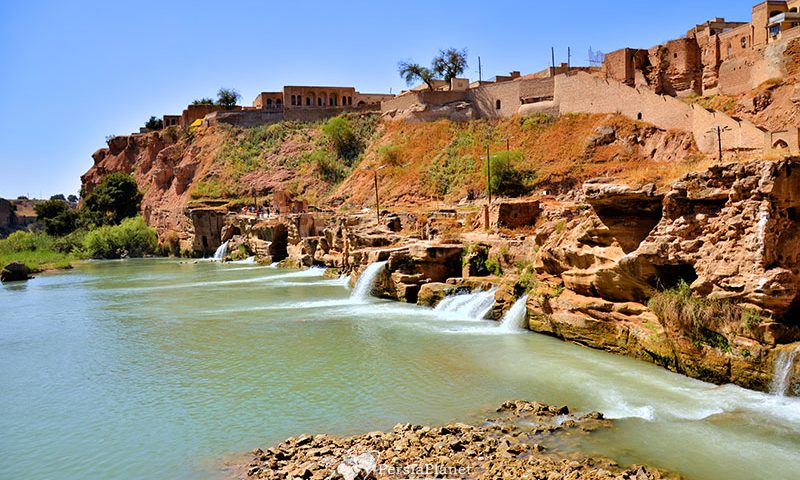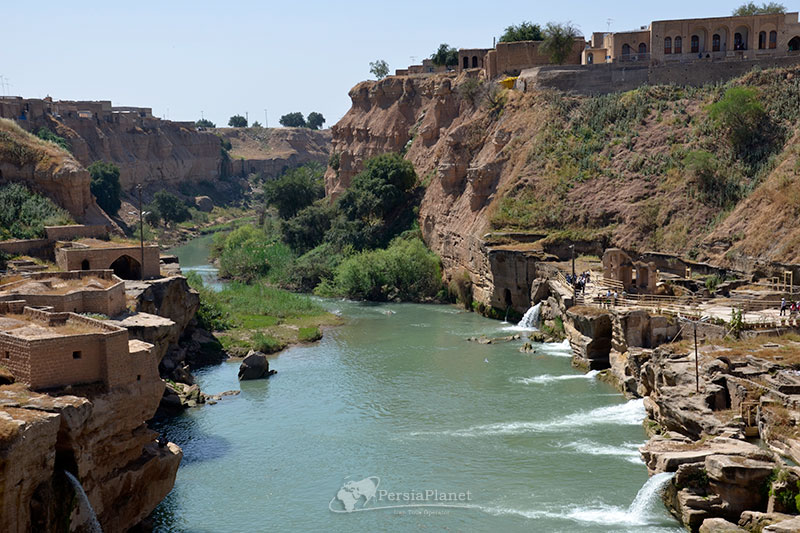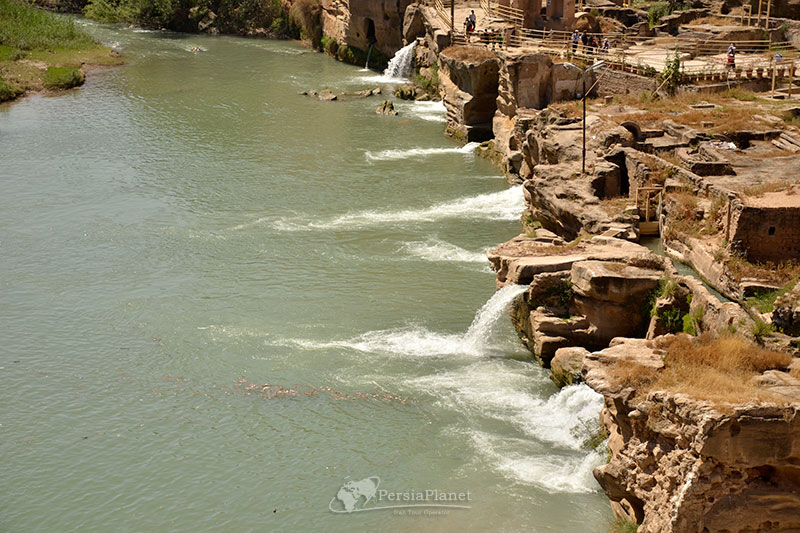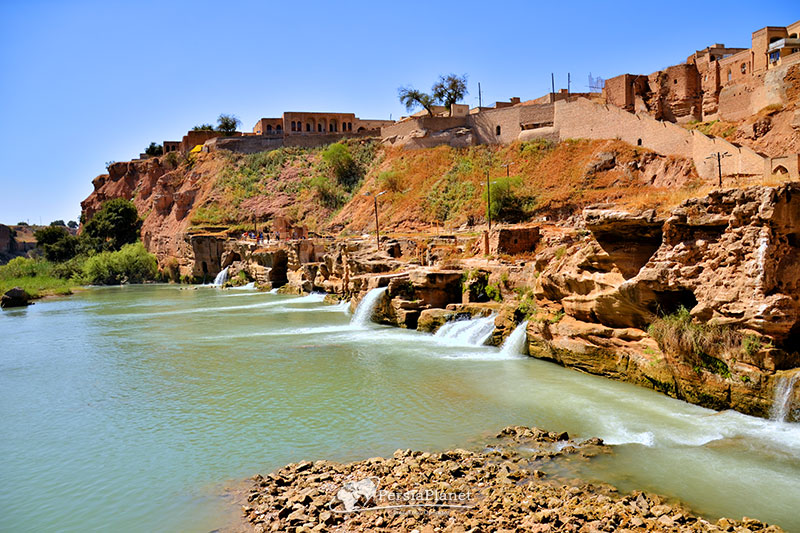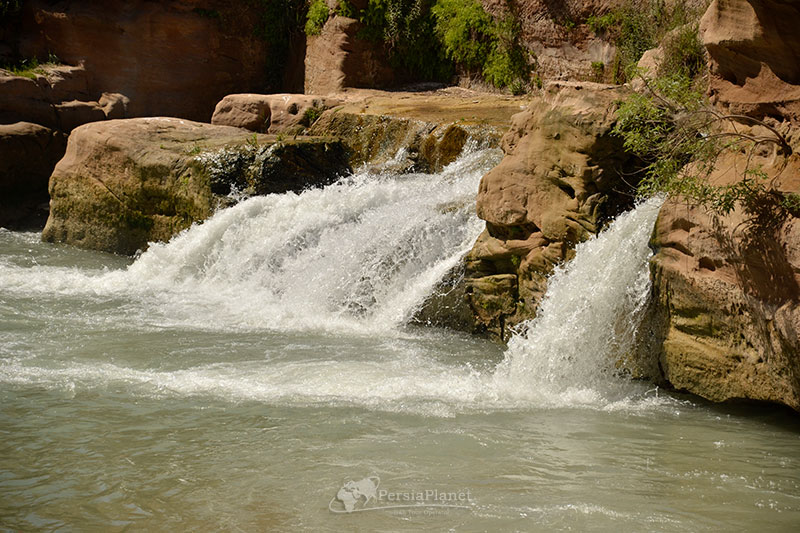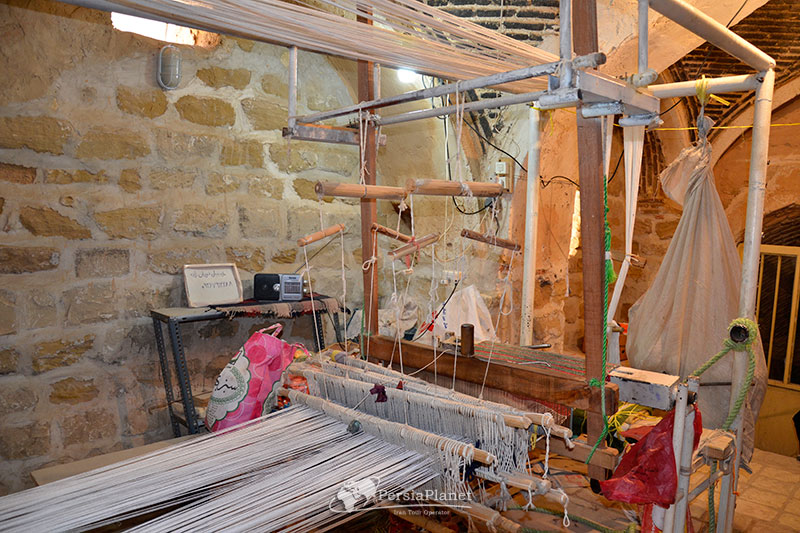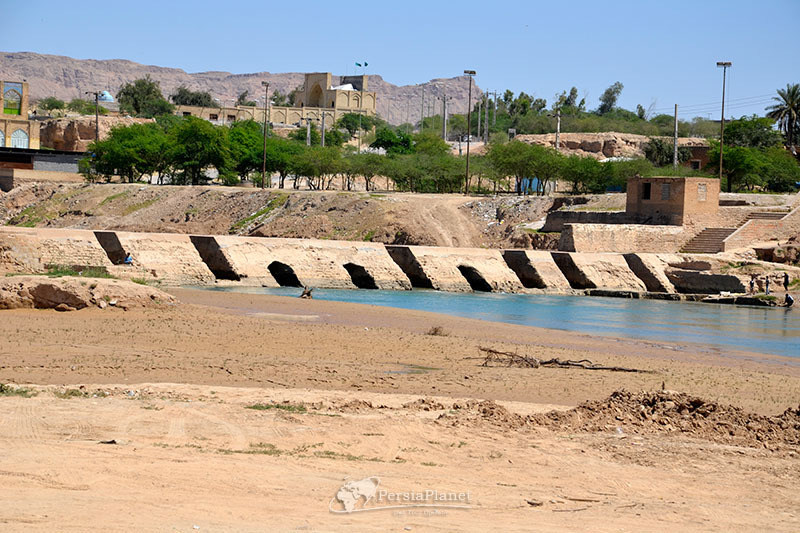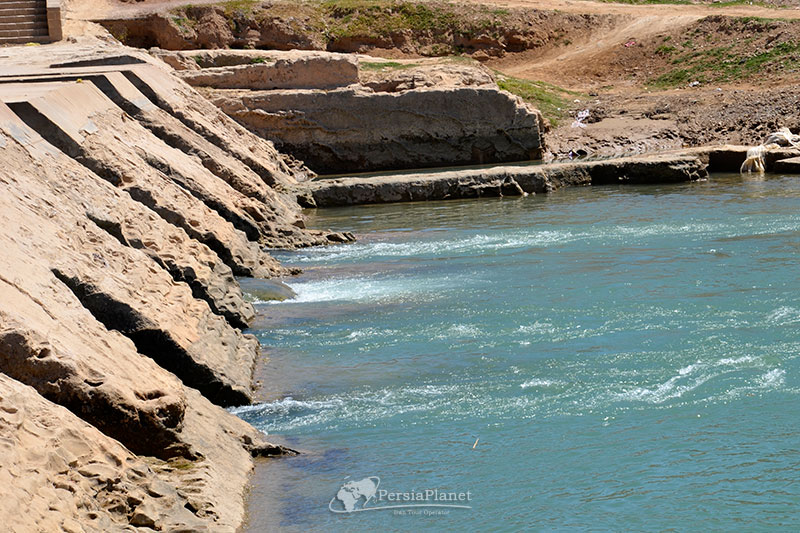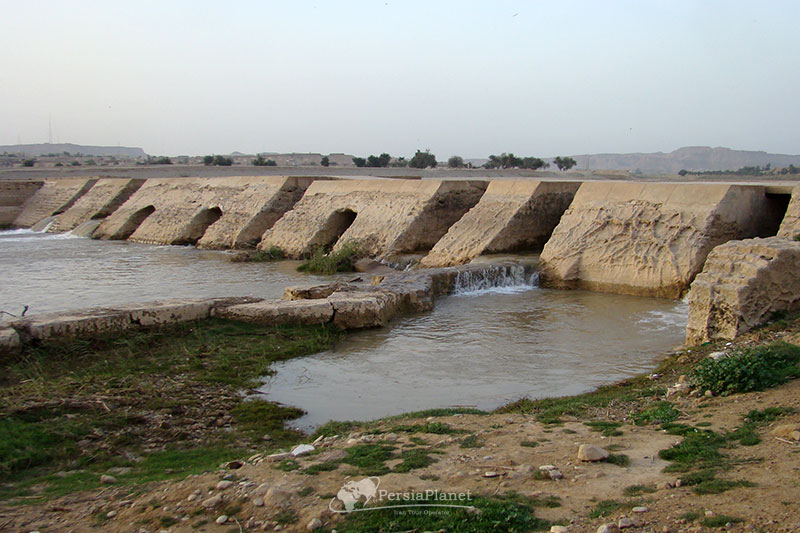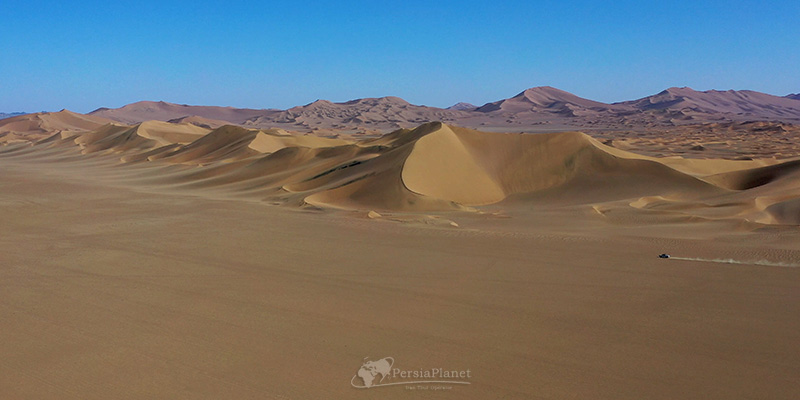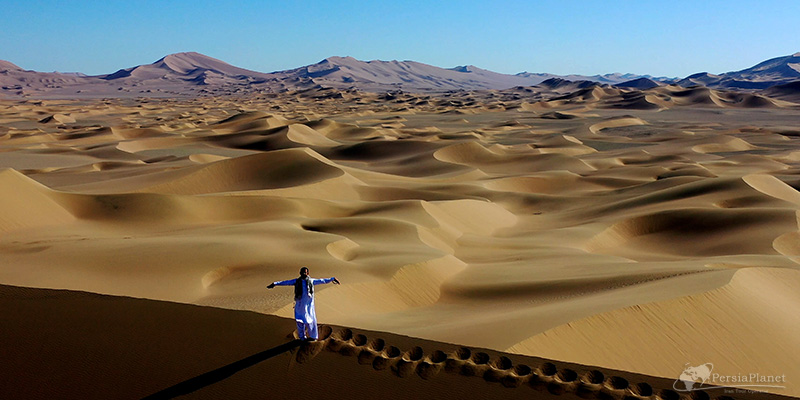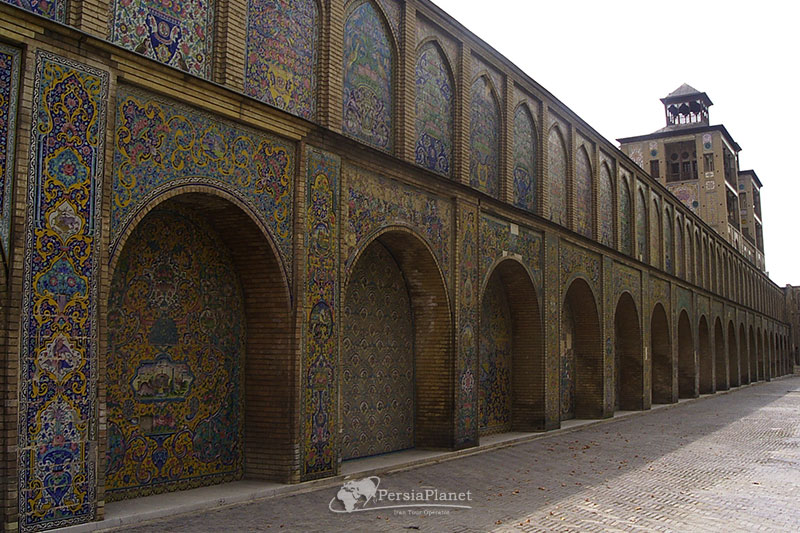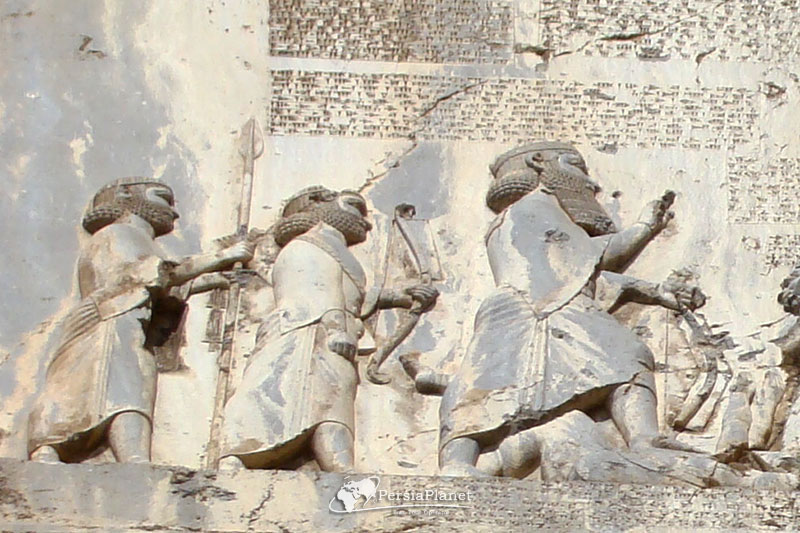Shushtar Historical Hydraulic System

Chogha Zanbil, Choghaznabil Ziggurat
August 10, 2021
Taq-e Bostan, Tagh Bustan
August 12, 2021It would not be an exaggeration to consider the water structures of Shushtar as one of the wonders of the ancient world. This collection has such greatness and wonder that by seeing it, you will realize the genius of its creators. The builders of Shushtar hydraulic structures have a lot of genius and technical knowledge in the field of hydraulic engineering and have managed and used water resources correctly and in principle. They by constructing various water structures, diversion and transfer of water of Karun river; They have made the most of water and used it for drinking, irrigation, agriculture and industry.
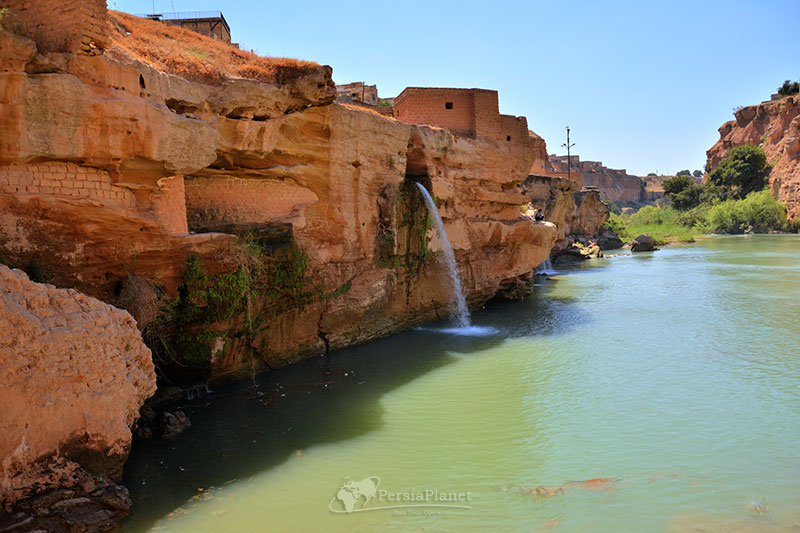
History of Shushtar historical hydraulic system
It is possible that the water structures of Shushtar were built during the Achaemenid period, but the declared date of this amazing complex dates back to the Sassanid era and its builder is attributed to kings such as Ardashir I and Shapur; But in general, this collection has been completed over time and in different periods, and sections have been added to it. According to the documents in the Qajar era, repairs and reconstruction have been done in this site.
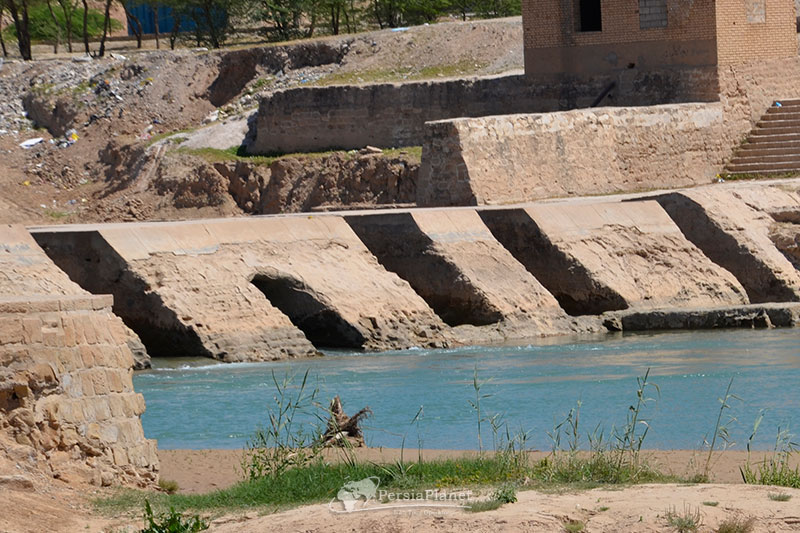
Application of Shushtar water structures
Each of the water structures of Shushtar has its own function and application, which in connection with each other, form an interconnected complex. In the construction and architecture of Shushtar structures, materials such as stone, brick and mortar have been used. These structures once prospered industry and agriculture and played an important role in transportation, communications and trade. Shushtar water structures supplied water equally to the entire city and prevented the Karun River from overflowing. They also create cool air that sends water to people’s homes through the Shavadons, which in Shushtar dialect refers to cellars and basements. In addition, agricultural lands were irrigated and mill cycles were used to produce wheat flour.
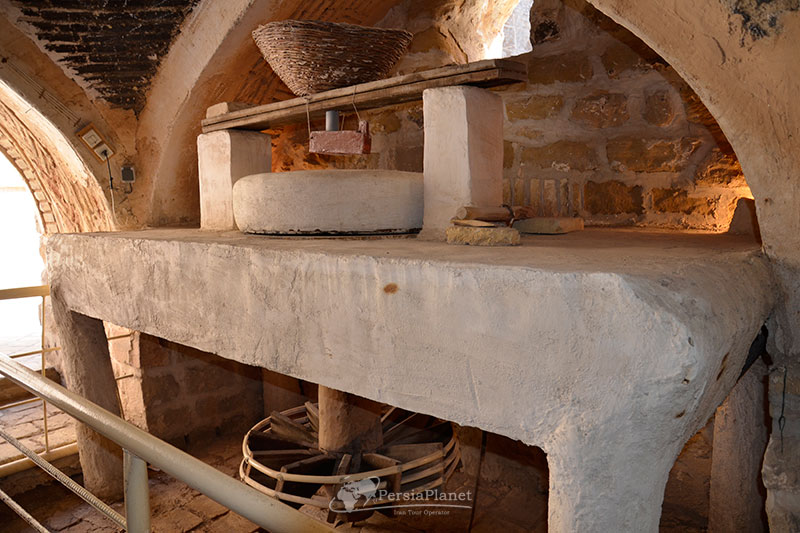
Where are the water structures of Shushtar?
Shushtar water structures is one of the spectacular and extraordinary attractions of Khuzestan province and one of the most important and valuable sights of Shushtar. This industrial-economic complex is located inside the historical context of Shushtar and you can easily visit it.
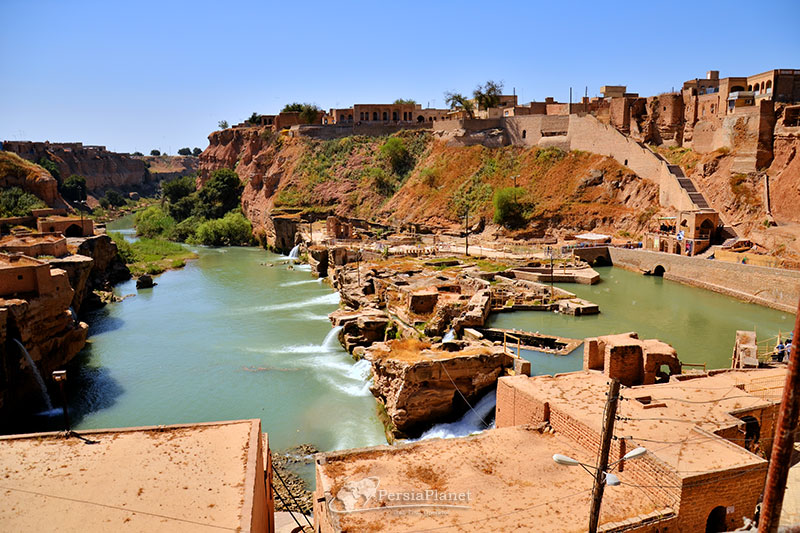
Access route to Shushtar water structures
To see the structures of Shushtar, you have to go to Khuzestan and then take the path to Shushtar. If you are moving from Tehran, you can go to Shushtar from the Khorramabad-Andimeshk freeway, in which case it will take about 9 hours to reach this city. Upon entering the city, signposts will guide you to this amazing attraction.
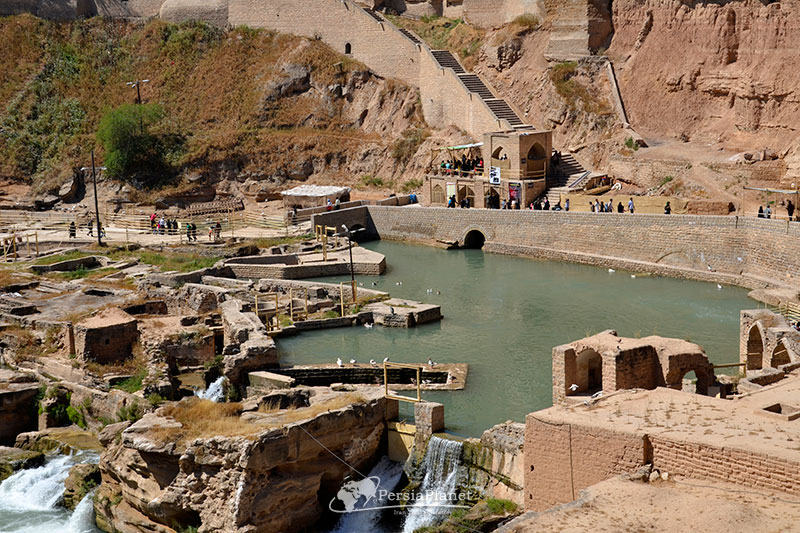
Different parts of Shushtar water structures
The Shushtar complex of water structures includes various sections such as bridges, dams, mills, waterfalls, canals, Sika (a place for rest and recreation) and huge water conduction tunnels. Over time, many components of Shushtar’s water structures have been destroyed by floods and other factors, and among what remains, a number of them, known as the historic Shushtar water system, have been inscribed on the UNESCO World Heritage List under 1315. July 25 is the anniversary of the registration of Shushtar water structures, which in 2009 was recognized as the tenth world monument of Iran.
Band Mizan
Band Mizan is also known as Qaisar, Shapuri, Dolat Shah, Taraz, Khaqan and Mohammad Ali Shah. This dam divides the water of Karun river into two branches and divides it into two branches, Shatit and Gargar. Because the water distributed in the Shatit River is twice the volume of water divided into the Gargar River, the Gargar River is called Dodangeh or Masraqan and the Shatit River is called Chahardangeh. This dam has been constructed to measure the flowing water of Gargar and Shatit rivers; That is why it is called Mizan Dam, which is made in the form of a circle with carved stone and mortar at the beginning of Gargar River and at the end of which there is a pergola tower. This dam consists of several openings, the most important of which is a separate opening that regulates the water of the two tributaries of the river; In such a way that if the volume of Gargar water is more than one third, it transfers it to Shatit branch and vice versa; This is one of the architectural masterpieces of this section.
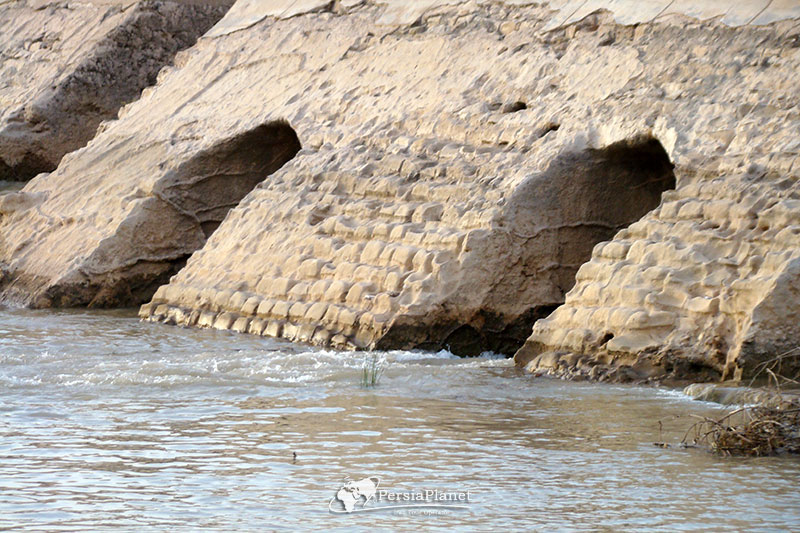
Pergola Tower
The pergola is an octagonal tower overlooking the Mizan Dam, which is located on a pedestal four meters above the ground. At present, seven meters are left from its height, and in its facade, cut stones have been worked. There are several theories about the time of construction and use of Shushtar Pergola Tower; Some believe that this tower was the watchtower of the Roman emperor or Sassanid Shapur and the place of monitoring the work of the workers; But some believe that the tower was used to monitor the amount and intensity of river flow. You can see the pergola tower in 17 Shahrivar Square of Shushtar at the end of Boulevard.
Gargar handmade river
The Gargar River, which flows north of Shushtar, is one of the tributaries of the Karun River, which is separated by the Mizan Dam. This river was artificially created by the order of Ardashir, the Sassanid king. The bottom of the river is paved and they are connected with metal fasteners to prevent the bed from deepening. The river flows through the city and provides the water needed for canals and tunnels. Gargar then joins the Shatit branch at the site of the Ghir dam, which flows into the Karun River along the Dez River.
Gargar Bridge
Gargar Dam Bridge, along with three diversion tunnels called Shahr, Seh Koreh and Biliti, are located at the bottom of Mizan Dam and above the mills. The bridge, which holds water at a certain level, was built on a rock and tunnels were dug inside the rock to supply the water needed to turn the mill wheel. Even now, with the failure of the mills, this water flows out of the entrance of the tunnels like a waterfall.
Waterfalls and water mills
Shushtar waterfalls and water mills include a series of tunnels, canals, water mills and dams. The function of this complex is such that as the Gargar River rises through the dam, water is directed into three tunnels and from there it is divided into several canals and after crossing the created paths and turning the mills, they fall into the ponds as spectacular waterfalls. Currently, many mills in Shushtar have been destroyed and are out of order, and only the Reza Golab mill is still working.
Visiting time of Shushtar Historical Hydraulic System
Visiting hours: the first six months of the year from 8:30 AM to 7:30 PM and the second half of the year from 8:30 AM to 5 PM
Holidays: Tasua and Ashura mourning days, the death of Hazrat Mohammad, Imam Reza, Hazrat Fatemeh and June 4 and 5
Religious holidays are based on the Arabic calendar and change every year according to the normal calendar.
The best time to visit Shushtar Historical Hydraulic System
Khuzestan is one of the tropical provinces of Iran and the best time to visit it is the second half of the year. From October to May, this province has a suitable climate and after that it is difficult to travel to it due to the hot weather.
Mehdi Gholami.

